Object Detection
뮌헨공대 (Technical University of Munich)에서 공부한
[IN2375 Computer Vision - Detection, Segmentation and Tracking] 컴퓨터비전 노트 정리
Old Approach
Template matching with sliding window
loss : MSE(SSD) / NCC / ZNCC (difference between ‘image itself’ and template)
단점 : self-occlusions / change in appearance / change in position / change in scale or aspect ratio
Viola-Jones detector (1-stage)
HOG (Histogram of Oriented Gradients) (1-stage)
Proposals(RoIs) by selective search or edge box (2-stage)
+) NMS에서 \(b_i\)와 비슷한 \(b_j\)들에 대해 confidence score를 비교하여 \(b_i\) 제거 여부를 결정하는데, 만약 \(IoU_{threshold}\)를 넘겨야 비교 후 제거 (N) 가능하다면 high \(IoU_{threshold}\) -> less FN, more FP
Detection Evaluation
TP : positive(BB)라고 예측했는데 맞았다(true)
FN : negative(no BB)라고 예측했는데 틀렸다(false)
precision / recall / F1-score
confindence score 순으로 P를 정렬한 뒤 AP(average precision)
여러 object category에 대해 평균 낸 게 mAP
R-CNN (2-stage)
R-CNN : extract RoI -> crop&warp -> CNN -> SVM & BB reg
장점 : CNN / transfer learning
단점 :
-
slow (~2k proposals per image are warped and forwarded each through CNN)
-> Fast R-CNN에서 SPP로 해결 -
object proposal algorithm is flixed
-> Faster R-CNN에서 RPN으로 해결 -
not end-to-end (CNN and SVM & BB reg are trained separately)
-> Faster R-CNN에서 RPN으로 해결
Fast R-CNN : CNN -> extract RoI -> SPP (RoI Pooling) -> fc -> classifier & BB reg
SPP (= Spatial Pyramid Pooling) : fc layer 직전에 배치하면 any input size 가능
R-CNN의 단점 1. 만 해결
Faster R-CNN : CNN -> RPN (loss 1., 2.) -> RoI Pooling -> fc -> classifier & BB reg (loss 3., 4.)
RPN (= Region Proposal Network) : output shape (H, W, 5n)
- n anchors per location
- 1 confidence score
- 4 normalized anchor coordinates
R-CNN의 단점 1., 2., 3. 모두 해결
FPN (= Feature Pyramid Network) :
define RPN on each level of FPN
scale variance 문제 해소
high scale pyramid에서 small object까지 detect하므로 more TP, FP
But, 단점 : model complexity
1-stage
YOLO (= You Only Look Once) : Faster R-CNN의 loss 3., 4.를 loss 1., 2.에 합치자!
output shape (H, W, 5n) 대신 (S, S, (5+C)n)
장점 : efficient, faster
단점 : less accurate (coarse grid resolution)
single scale (small object detect 불가능, scale variation에 취약)
SSD (= Single Shot Multibox Detector) : multi-scale을 사용하자!
장점 : YOLO 단점 해결
단점 : still less accurate than two-stage detectors due to class imbalance
data augmentation 중요
class imbalance 문제 :
two-stage detector의 경우 first stage에서 미리 negative anchor를 대부분 걸러낼 수 있지만
one-stage detector는 그렇지 않아서 class imbalance 문제 발생
대안 :
- hard negative mining : FP 오류 줄이기 위해 어려웠던 sample들 추가
- focal loss = \(-(1-p)^r * log(p)\) : 많이 존재하는 easy example(p ~ 1)은 \((1-p)^r\)로 영향 작게 만들고, 적게 존재하는 hard example(p ~ 0)에 가중을 둠
RetinaNet : 기존 1-stage 방법 + multi-scale(FPN) + focal loss
accuracy : YOLO < SSD < two-stage detector < RetinaNet
spatial transformer :
grid generator로 sampling with bilinear interpolation
= localisation & certain transformation
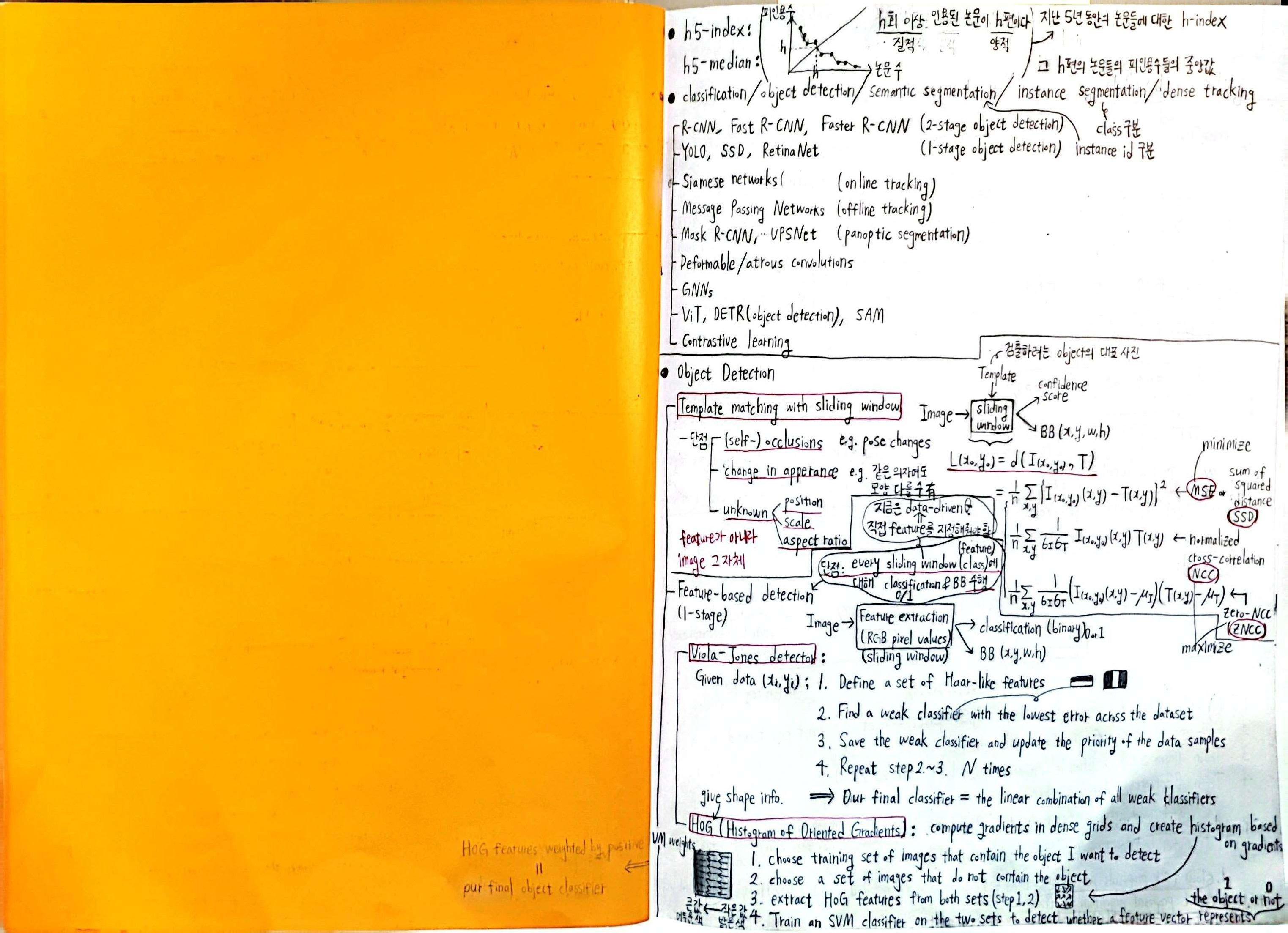
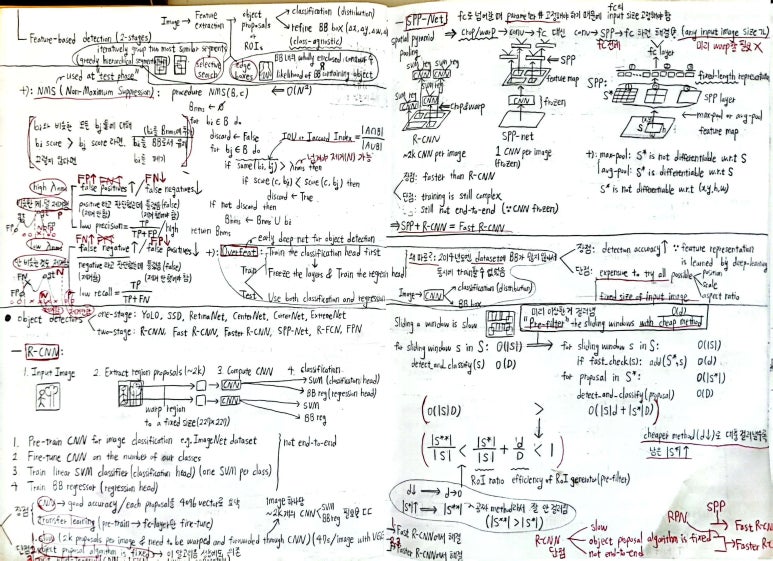
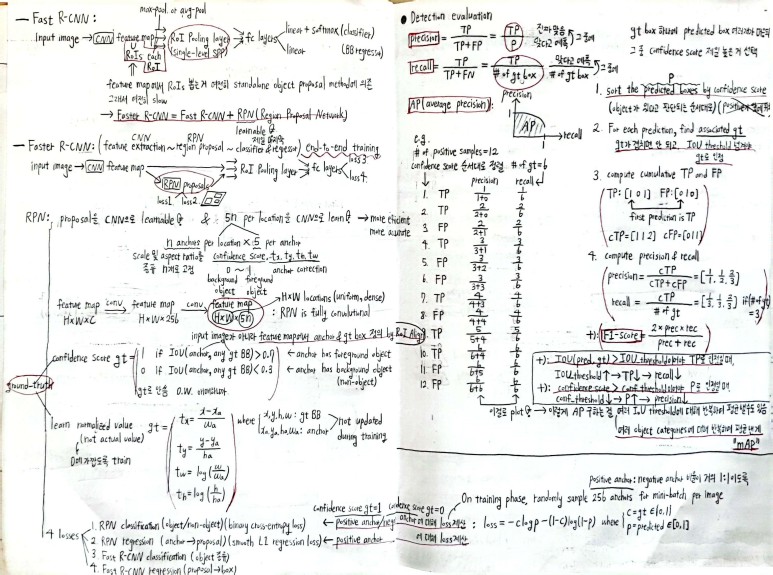
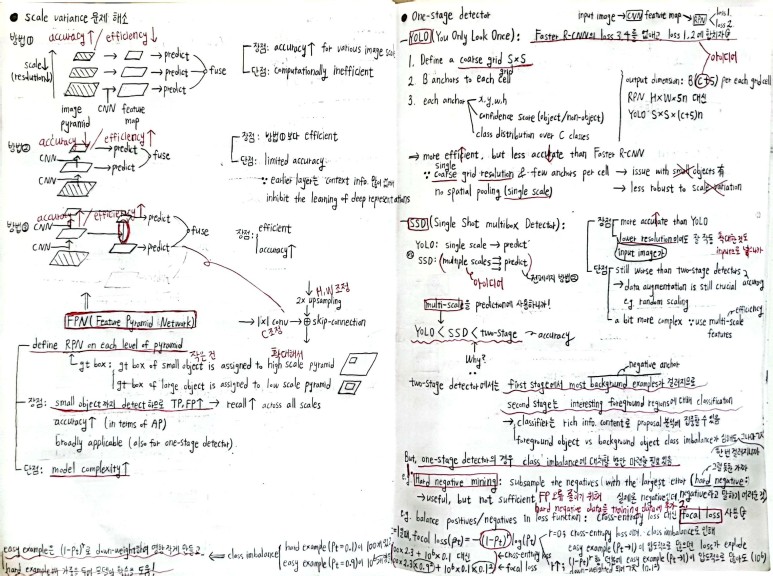
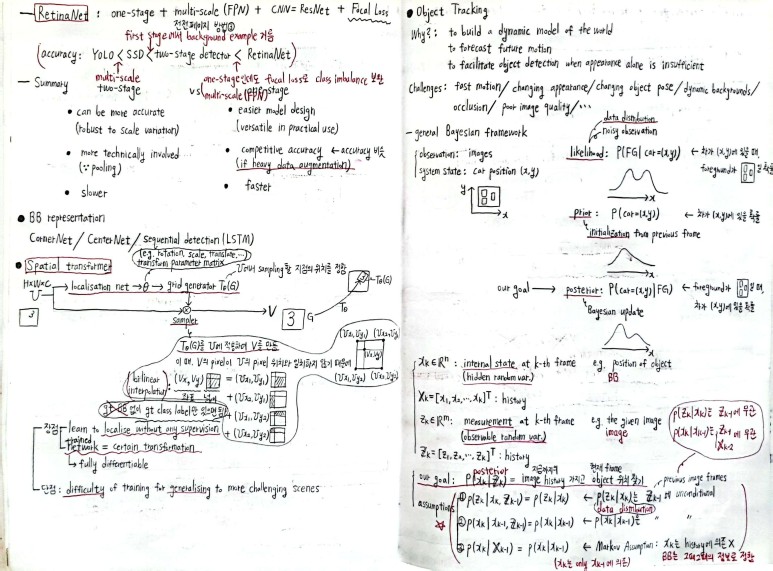
Enjoy Reading This Article?
Here are some more articles you might like to read next: